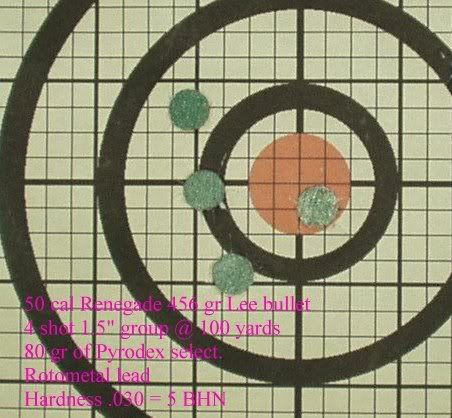So, thinking about a fifty Sharps as an example, one turn in three feet is not unusual. Maybe that a GPH with 1:32 might work out with less powder. The GRP has a workable set of triggers. Twin wedges. Plenty of weight. And, depending on how you load it, the shallow grooves might be a plus with less distortion from obduration.
All in all, it might be a very nice package.
I think if you measure those .50 sharps bullets you will find they are pretty much in the length range that I suggested.
I can give you the sum of first hand experience shooting those same bullets in a .50 ml. The rifle was a TC Hawken .50 with 1:48 twist. The bullet was the .50-70 govt 450 grain .515 bullet sized down (to .501 or .504 can't remember which. Lee has a mold for this. Here is a pic:
These shot
great in my TC. More accurate than any other I had ever tried which included Maxi Ball, R-E-A-L and Lee modern minie. I never exceeded 80 grains of ffg Goex. The recoil was horrendous.
Lee has the 500 grain .50-70 bullet too. It looks like this:
It's my guess that if the 1:48 would stabilize the 450 grainer, then the 1:32 in the GPH would stabilize the 500.
The Lee molds are economical and they also offer a .501 push through sizer so these could be experimented with on the cheap. You could slug your bore and have Lee make you a matching custom push through sizer as well.
I think if you wanted something bigger than a 500 you would have to get it custom made. Lee is, once again, a source. They have some minimum pricing that puts them in the same ball park as a custom mold from other makers,
but, while Lee is high on the first mold, the subsequent copies are normal price. You could order 10 or so and sell them to recoup your investment.
BTW, I have a spreadsheet that calcs the Greenhill formula and shows results for constants ranging from 120 up to 230. It puts out twist needed for any given caliber/length or max length for any caliber/twist.
Greenhill is never the final word on twist, but it gives some food for thought. Many loooooong range bpc and ml shooters are usisng the 120 constant.
If you want a copy, PM me and I'll email it to you.























